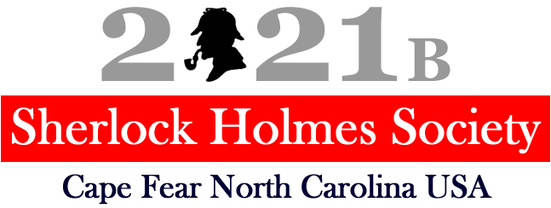WRITTEN BY TOM CAMPBELL, SHS
January 1, 2022
January 1, 2022
There are many things in life that we take for granted, mainly because the details that are presented don't seem to be important. For example, why did Arthur Conan Doyle (ACD) choose "221B" as the numeric address for the Baker Street flat of Sherlock Holmes and Dr. John H. Watson? The answer to that question is not necessarily important, but it is a mystery, none the less. The purpose of this paper is to provide a possible solution to that mystery, which I call "The Baker Street Secret".
Every Sherlockian knows that 221B Baker Street is an address that did not really exist when Sherlock Holmes and Dr. John H. Watson rented rooms there. According to Wikipedia, an examination of an 1890 map of London will reveal that the number 85 was the highest street number issued on Baker street at the time. So why did ACD choose 221B?
The most accepted answer is that ACD intentionally selected a fictitious street address so that no one could claim to live in the same residence once occupied by the great detective. But while I agree with that premise, it really doesn't answer the question. Why did ACD choose 221? Why not 220, or 222? Was his selection of 221 purely random? Personally, I don't think so. Based on everything I have learned about ACD, his choice of 221B for the Baker Street address was intentional, and completely in keeping with his character, background, and personality.
THE EVIDENCE
|
Reading any number of biographies of ACD will reveal that he was brought up Catholic, but late in his life, he abandoned Catholicism and became a spiritualist and mystic. In the spring of 1922 Conan Doyle visited Houdini in his New York City home, whereupon the magician set out to demonstrate his "Slate Writing Trick". He had ACD write several words on a piece of paper, and then conceal them from everyone. The words ACD wrote were "mene, mene, tekel, parsin" from the BOOK OF DANIEL found in the Holy Bible. He then used his "Slate Writing Trick" to write out the same exact words that ACD had written. After the trick was over, Houdini tried to convince ACD that it was just a trick, but ACD refused to believe him, thinking that Houdini had authentic spiritual powers.
|
ACD
|
The fact that he used "mene, mene, tekel, parsin" for Houdini's trick demonstrated that ACD knew the BOOK OF DANIEL pretty well, probably due to his Catholic upbringing. Those words came out of Chapter 5, dealing specifically with the hand writing on the wall. However, a little earlier in the book, there is a story of Daniel being ordered to interpret King Nebuchadnezzar's first dream, when his own mystics and sorcerers could not. Daniel prays to the God of Israel for help, and in a vision, God tells Daniel what he needs to know. In return, Daniel prays a prayer of thanks to God for giving him the interpretation he needs.
At the time of his upbringing, ACD would have used the Challoner-Rheims Bible, which was used by English Speaking Catholics from 1752 to 1941. One of the verses in Daniel's prayer of thanks, taken directly from the Challoner-Rheims Bible is as follows:
And he changeth times and ages
taketh away kingdoms, and establisheth them:
giveth wisdom to the wise,
and knowledge to them that have understanding:
taketh away kingdoms, and establisheth them:
giveth wisdom to the wise,
and knowledge to them that have understanding:
This is a two-part verse, where the second part describes how God "giveth wisdom to the wise, and knowledge to them that have understanding." It is based on the assumption that information does not become knowledge until it is understood by the person who receives it. Furthermore, it is viewed as wisdom by the wise, rather than the foolish.
When ACD created Sherlock Holmes, he equipped the great detective with the unique ability to understand how to create knowledge from information, and the wisdom to know where and when to use it.
And as we all know, Sherlock Holmes demonstrates this unique ability many times throughout the Canon. I believe that ACD felt so strongly that this verse described the unique abilities of Sherlock Holmes, that he used the STANDARD BIBLICAL NOTATION FOR THIS VERSE as the famous Baker Street address. In case you have not yet figured it out, the second part of this verse in standard Bible notation is DANIEL 2:21b
And now you know the Baker Street Secret!


